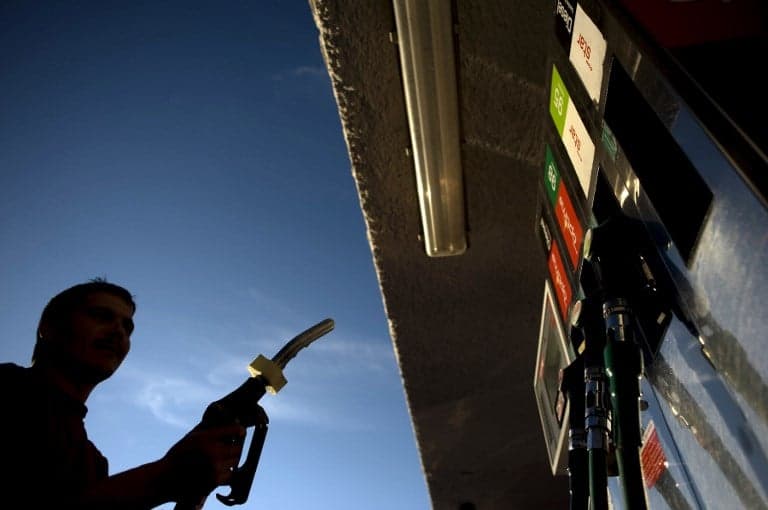What you need to know about Spain's new petrol pump labels

Petrol pump labels are set to change in Spain and indeed across Europe as part of the European Union's bid to standardise the labeling system. Here's what you need to know.
From October 12th, petrol pumps will look slightly different in Spain and across the EU, as well as in neighbouring countries including Norway, Iceland and Turkey.
Under the new EU directive, instead of “Unleaded” and “Diesel”, petrol pumps will be labelled with letters and numbers, relating to the type of fuel and the amount of biofuel it contains in a bid to help consumers select the appropriate fuel for their vehicles throughout Europe.
A partir del 12 de octubre ya no pedirás más gasolina 95, 98 y diésel porque las gasolineras cambian el etiquetado. Así será ➡️ https://t.co/9WDSSMmG1E pic.twitter.com/6kD26U3G0f
— Certio ITV (@certioitv) September 26, 2018
This will see names for different fuels being shortened and a set of symbols will also be introduced.
Under the new system, “Unleaded 95” and “Unleaded 98” will both be replaced by the letter “E” surrounded by a circular border, followed by a “5” for 5 percent biofuel or “10” for 10 percent and the fuel currently labelled "Superethanol" will become "E85" (see below).
 Diesel will be identifiable by a square containing the letter "B" followed by either the number "7" or "10" depending on the amount of biofuel it contains. There will also be square label containing the letters "XTL" the XTL which indicates the fuel is synthetic diesel and not derived from crude oil (see below).
Diesel will be identifiable by a square containing the letter "B" followed by either the number "7" or "10" depending on the amount of biofuel it contains. There will also be square label containing the letters "XTL" the XTL which indicates the fuel is synthetic diesel and not derived from crude oil (see below).
 Finally, the diamond symbol will be used to indicate hydrogen fuel when it contains “H2”, compressed natural gas when you see the letters “CNG”, liquified petroleum gas when it contains the letters “LPG”, and if you see the letters “LNG” in a diamond shape the pump contains liquified natural gas (see below).
Finally, the diamond symbol will be used to indicate hydrogen fuel when it contains “H2”, compressed natural gas when you see the letters “CNG”, liquified petroleum gas when it contains the letters “LPG”, and if you see the letters “LNG” in a diamond shape the pump contains liquified natural gas (see below).
 To help with the transition, both the new and current labels will be displayed alongside each other at petrol stations.
To read more about the changes in English, CLICK HERE
To help with the transition, both the new and current labels will be displayed alongside each other at petrol stations.
To read more about the changes in English, CLICK HERE
 .
.
Comments
See Also
From October 12th, petrol pumps will look slightly different in Spain and across the EU, as well as in neighbouring countries including Norway, Iceland and Turkey.
Under the new EU directive, instead of “Unleaded” and “Diesel”, petrol pumps will be labelled with letters and numbers, relating to the type of fuel and the amount of biofuel it contains in a bid to help consumers select the appropriate fuel for their vehicles throughout Europe.
A partir del 12 de octubre ya no pedirás más gasolina 95, 98 y diésel porque las gasolineras cambian el etiquetado. Así será ➡️ https://t.co/9WDSSMmG1E pic.twitter.com/6kD26U3G0f
— Certio ITV (@certioitv) September 26, 2018
This will see names for different fuels being shortened and a set of symbols will also be introduced.
Under the new system, “Unleaded 95” and “Unleaded 98” will both be replaced by the letter “E” surrounded by a circular border, followed by a “5” for 5 percent biofuel or “10” for 10 percent and the fuel currently labelled "Superethanol" will become "E85" (see below).

Diesel will be identifiable by a square containing the letter "B" followed by either the number "7" or "10" depending on the amount of biofuel it contains. There will also be square label containing the letters "XTL" the XTL which indicates the fuel is synthetic diesel and not derived from crude oil (see below).

Finally, the diamond symbol will be used to indicate hydrogen fuel when it contains “H2”, compressed natural gas when you see the letters “CNG”, liquified petroleum gas when it contains the letters “LPG”, and if you see the letters “LNG” in a diamond shape the pump contains liquified natural gas (see below).

To help with the transition, both the new and current labels will be displayed alongside each other at petrol stations.
To read more about the changes in English, CLICK HERE
 .
.
Join the conversation in our comments section below. Share your own views and experience and if you have a question or suggestion for our journalists then email us at [email protected].
Please keep comments civil, constructive and on topic – and make sure to read our terms of use before getting involved.
Please log in here to leave a comment.